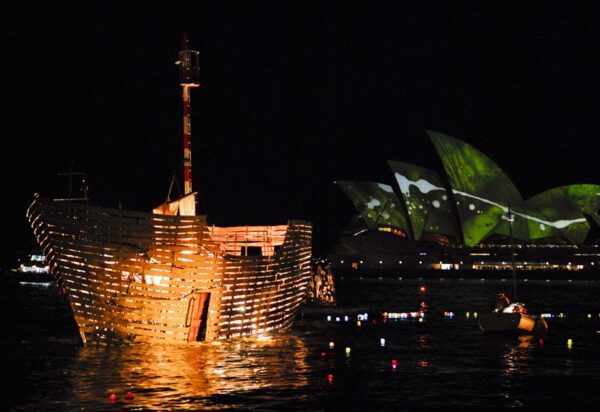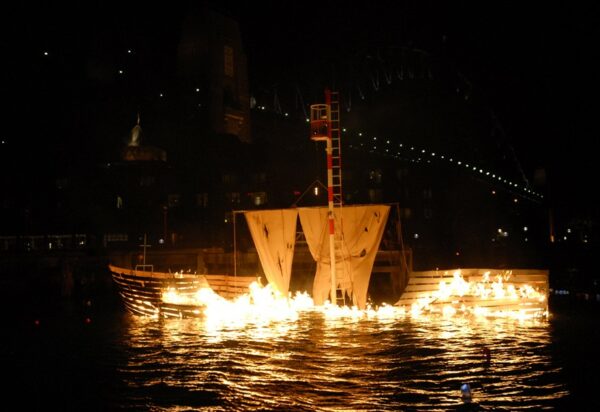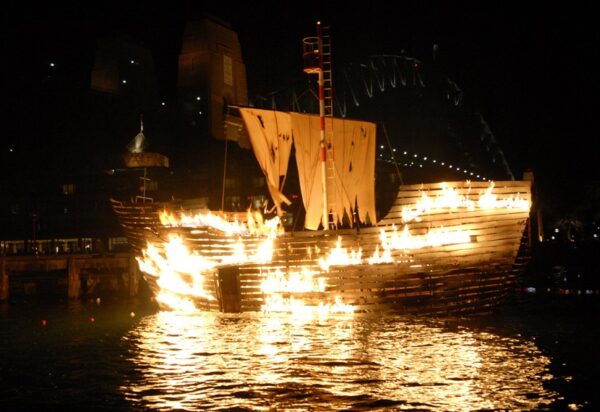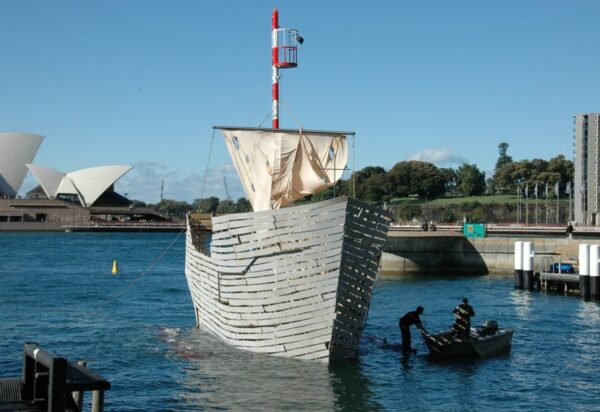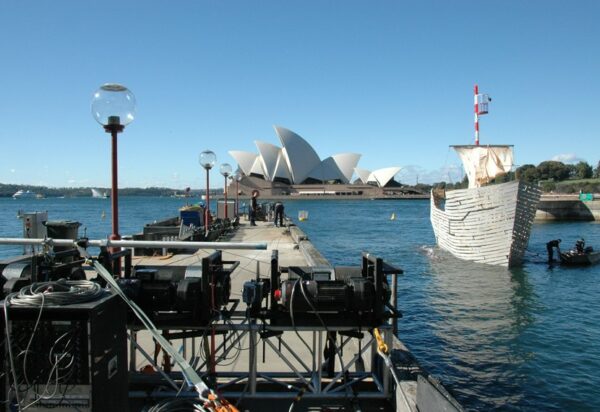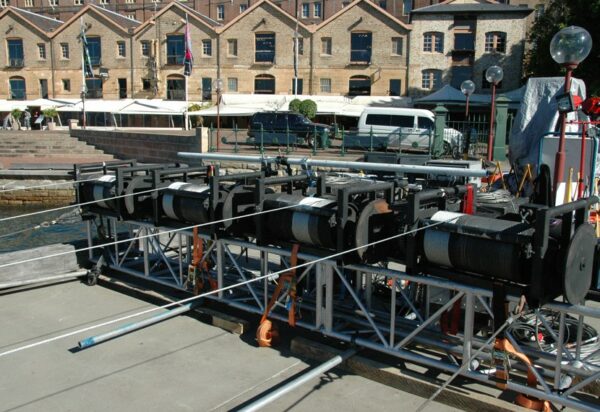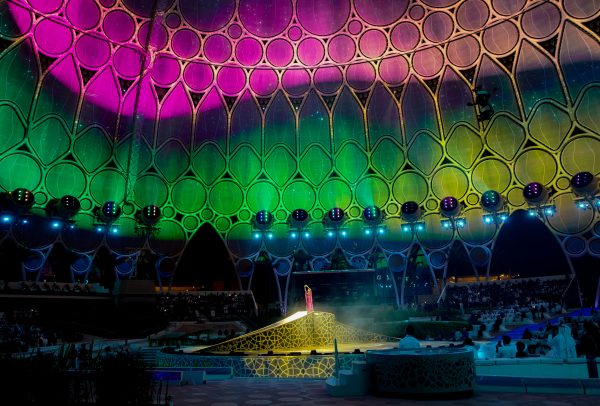Vivid Sydney was the largest international music and light festival in the Southern Hemisphere. This public festival celebrated the diversity of Sydney’s creative industries through stories told using light, sound and engineering ingenuity. Working in close collaboration with the other parties involved, in particular with Adam Huie at Banks Events, we found ourselves applying our skills to the unusual underwater context of ‘Fire Water’, a dramatic outdoor theatre event commissioned by the Sydney Harbour Foreshore Committee.
‘Fire Water’ attracted around 20,000 harbour-side spectators who came to see the extraordinary retelling of the story surrounding the Three Bees convict ship. A ghostly representation of the ship rose from the dark of Campbell’s Cove, exploding into flames before sinking once more into the harbour; a sequence repeated a total of nine times over three days. The original Three Bees had no such rebirth, sinking forever in 1812 after a massive explosion triggered by a small fire which ignited a cargo of 30 gun powder kegs.
The project team included Australia’s leading outdoor theatre makers, along with more unusual, location specific contributors such as divers and a maritime engineer. Taking our experience in the field of aerial automation, we turned it on its head to provide precise underwater motion control that could both raise and sink the Three Bees replica for each of the three shows on each of the three nights.
QMOTION AT THE HELM
The boat itself was controlled using four 4kW motors, all using Qmotion run on our nextQ control system. The motors were located at each of the four ‘corners’ of the boat, with each one providing 10kN of downward force. The function of the motors was twofold: not only did they provide the necessary downward force to overcome the boat’s four tonnes of natural buoyancy, but they also had to be synchronised in order to provide the necessary stability to ensure that the boat did not tip over.
In order to keep the system in place underwater, a total of five 4.5 tonne concrete blocks were manoeuvred into place on the seabed with the assistance of divers and barge based cranes. Four of the blocks were used as anchor points for a double purchased rigging point, creating a stable platform from which to pull down the boat. The fifth concrete anchor point was used as a diversion to pass the flexible steel wire rope (FSWR) from the points on the far side, under the boat and then up onto the wharf. The FSWR passed from the anchor point up and through a pulley on the base of the boat down to the anchor point and then up onto the wharf where it connected to our winches.
We developed a system specifically for this project that integrated a static line with a bungee, ensuring that the FSWR under the water was always under tension. This meant that when the boat was floating at the surface, bobbing up and down on the waves, the bungee was dynamically adjusting the tension of the system, allowing for realistic movement. After the initial consultation period, the whole system was installed in less than a day, followed by two days of commissioning and adjustments before the full dress rehearsal and all nine performances.
